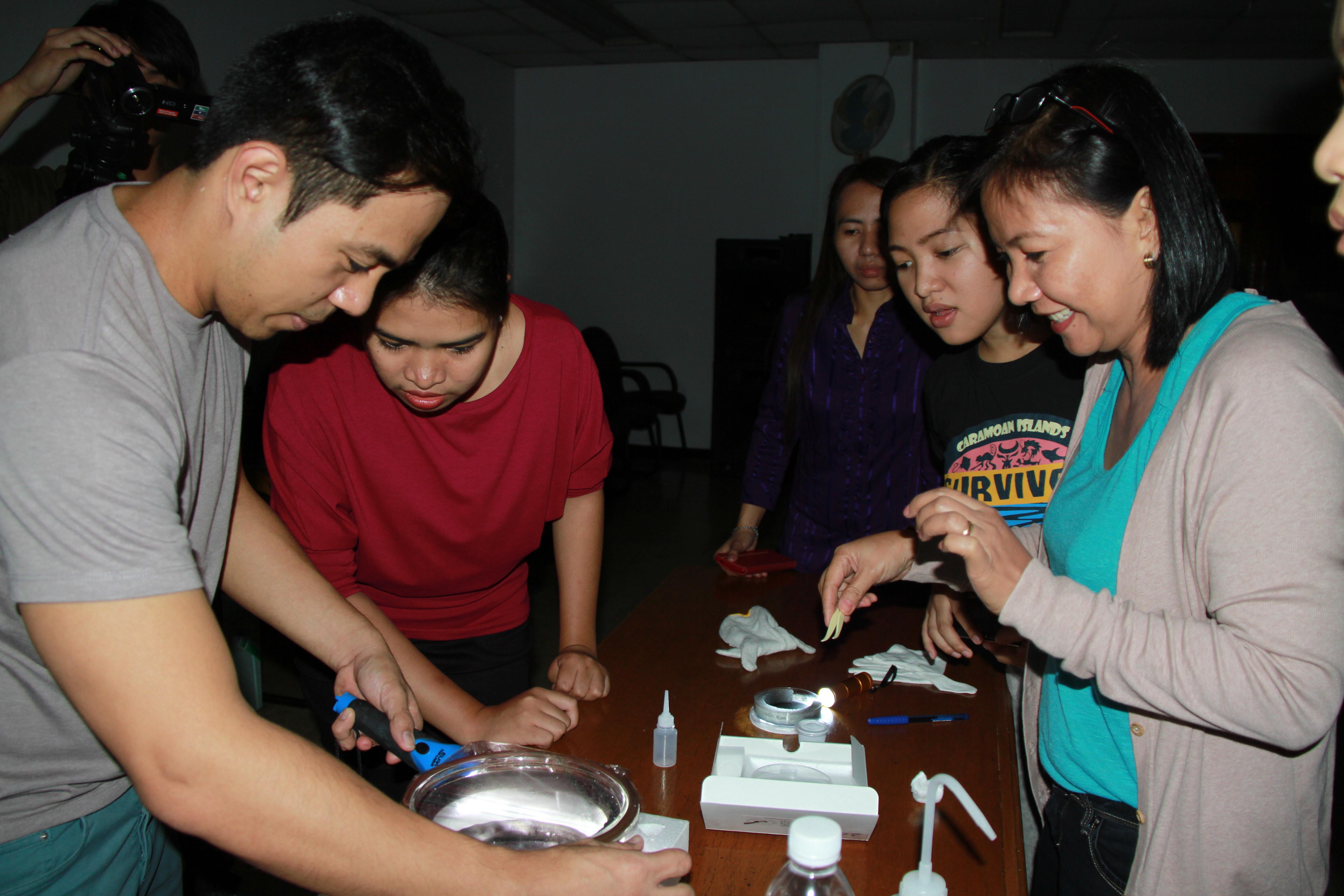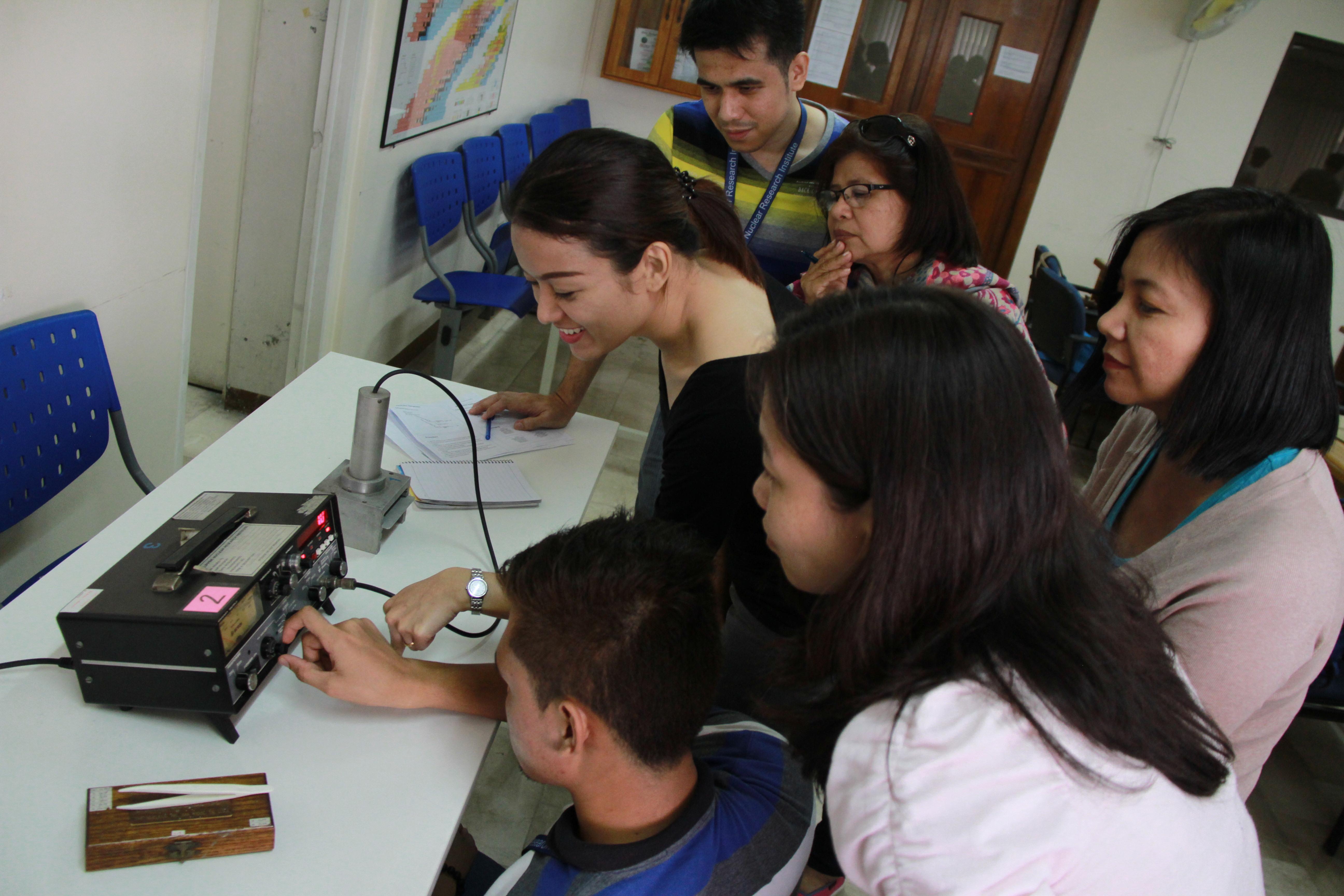

Left Photo: The participants conduct the cloud chamber experiment to see the tracks of radiation emanating from the radioactive source. The experiment was supervised by high school teachers involved in the International Atomic Energy Agency educational outreach program on nuclear science and technology for secondary schools
Right Photo: A radiation measurement activity being conducted at the PNRI Nuclear Training Center
Halfway this summer, teachers from secondary schools and instructors from universities and colleges spent the rest of the vacation grappling with equations and formulas as they studied nuclear science and technology to develop teaching modules and case studies under the tutelage of experts from the Department of Science and Technology – Philippine Nuclear Research Institute (DOST-PNRI).
This May, the faculty felt the nostalgia of being students once again during the Course on Nuclear Technology (CNT) and the Seminar on Nuclear Science for Teachers (SNST) conducted by the PNRI Nuclear Training Center. University professors and graduates from De La Salle University, Cagayan State University, University of Eastern Philippines and University of the Philippine Los Baños participated in the CNT. The SNST participants are composed of science teachers from several secondary schools in Metro Manila and Luzon.
Also among the participants are teachers from Quezon City Science High School and San Francisco High School, who are currently serving as pilot schools for an outreach program for high schools on nuclear science and technology. The outreach program is under the International Atomic Energy Agency (IAEA) Project RAS/0/065 on Supporting Sustainability and Networking of National Nuclear Institutions in Asia and the Pacific Region.
The CNT was held on May 4 to 15, while the SNST continued up until May 22. The participants from both courses were oriented on the basics of radiation and radioactivity, nuclear physics and chemistry, detection and measuring instruments, radioactivity counting, neutron sources and interactions, radiation safety, protection and shielding, among others.
The high school teachers were exposed to the various applications of nuclear science and technology, such as food irradiation, mutation breeding, soil fertility and plant nutrition studies, radioisotopes in medical, industrial and geological applications, and nuclear energy for power generation. The SNST lectures also involved relevant aspects of nuclear regulations and radiation safety, such as emergency planning, preparedness and response, radioactive waste management practices, secure transportation of radioactive materials and radiation monitoring. Meanwhile, the CNT participants learned much about gamma spectrometry, the production of radioisotopes and its environmental applications, and radiation processing of natural polymers.
Written examinations were given to the participants to gauge how much did they learn after every week. The participants were also required to develop the respective final requirements for each course – the teaching modules for SNST and case studies for the CNT participants. These were presented before a panel of evaluators composed of experts from various PNRI research and regulatory sections.
After these activities, the participants had the opportunity to go on a tour of the various PNRI facilities and laboratories such as the Technetium-99m Generator Facility, the Philippine Research Reactor-1 (PRR-1), the Cobalt-60 Multipurpose Irradiation Facility and the Electron Beam Facility. The visit gave the participants a first-hand observation of the nuclear and radiation applications they learned during the course.
Extending their fellowship beyond the training seminar, the high school teachers will cap the summer with a trip to the Bataan Nuclear Power Plant on June 11, where they will join visitors from other countries in a teacher’s exchange program under the IAEA outreach program.












































